Anahita
Anahita, also known as Anaitis (Greek: Ἀναῖτις) and Anahit (Armenian): Iranian water goddess.
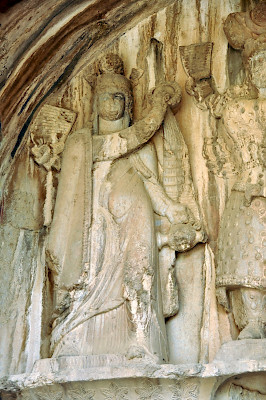
Anahita was the goddess of the fertile waters and natural fertility, venerated in Greater Iran (Sogdia, Bactria, Aria, Parthia, Media, Persis), Elam, Urartu/Armenia, and Cappadocia. The Greeks recognized her as a moon goddess and identified her with their Aphrodite or Artemis. In Sasanian Persia, Anahita was also seen as protector of families, while the Armenians believed she protected wisdom.
She is mentioned in the sacred book of Zoroastrianism, the Avesta,note and in three Achaemenid Royal Inscriptions from the reign of Artaxerxes II Mnemon (r.404-358 BCE).note There were sanctuaries for Anahita in Bactra, in Ecbatana,note in Artaxata, in Zela,note and in Hierocaesarea.note
The goddess is represented in Darabgird and in the Large Cave of Taq-e Bostan. Her attributes are a ring and a water jar. The identity of the female figure on the Investiture Relief of Narseh in Naqš-e Rustam is contested. A famous head of the goddess was found in the Roman legionary base at Satala and is believed to have been taken away fromm the Armenian capital Artaxata.
Modern scholars have suggested that Anahita was also venerated at Kangavar, Qadamgah, and Bishapur, where sanctuaries have been found that can plausibly be identified as water temples. However, not every aquatic deity automatically equates with Anahita, so there is room for doubt.
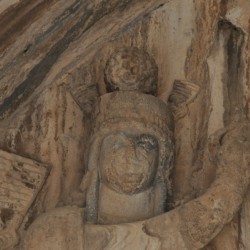 Taq-e Bostan, Large cave, Anahita (head) |
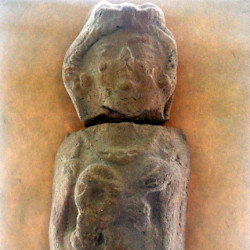 Afrosiab, Figurine of Anahita |
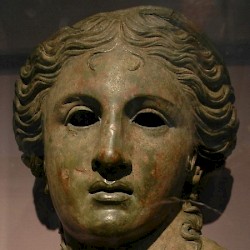 Satala, Head of the goddess Anahita, shown as Aphrodite |
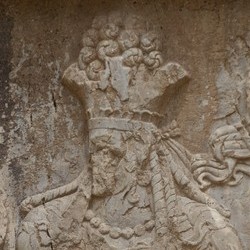 Naqš-e Rustam, Anahita (?) |